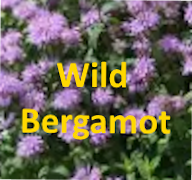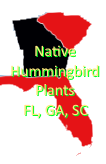Purple Coneflower: Free Hummer Nectar vs. the Sugar Shaker Nectar Maker (almost free nectar!)
Is Purple Coneflower (Echinacea purpurea) the Best Plant for Free Hummer Nectar? A Detailed Look
If you want to make free hummer nectar using plants, the purple coneflower (Echinacea purpurea) often comes up as a popular candidate. This native North American perennial is not only admired for its vibrant blooms but also for its ability to attract hummingbirds, bees, and butterflies—making it an attractive plant for those interested in natural nectar sources. However, is it truly the best plant in the coneflower line for producing nectar? Let’s explore where purple coneflower is grown, its growing conditions, potential downsides, and ultimately if it’s the more cost-effective choice compared to making hummer nectar at home using like the Sugar Shaker Nectar Maker.
Understanding Purple Coneflower: Growth and Habitat
Purple coneflower, scientifically known as Echinacea purpurea, thrives predominantly in the central and eastern regions of the United States. It is a hardy perennial commonly found from the Great Plains eastward into the Appalachian Mountains and down into parts of the southeastern U.S. It has also been widely cultivated beyond its native range due to its adaptability and ornamental appeal.
This plant favors USDA hardiness zones 3 through 9, which covers a vast swath of the continental U.S., making it quite versatile across climates. It is well-suited to temperate zones and can manage colder winters, provided the soil doesn’t remain overly saturated during this period.
Ideal Growing Conditions: Soil and Sunlight
Purple coneflower does best in well-drained soil and is surprisingly tolerant of poor soil conditions, which adds to its appeal for gardeners. It thrives in sandy, loamy, or clayey soils but needs good drainage to avoid root rot. The ideal pH level for this plant tends to be slightly acidic to neutral (around 6.0 to 7.0).
Sunlight is critical for the success and nectar production of purple coneflowers. They prefer full sun—meaning at least six hours of direct sunlight per day. While they can tolerate partial shade, their flowering potential and nectar yield diminish without ample sun exposure.
Annual or Perennial? Maintenance and Invasiveness
One major advantage of purple coneflower is that it is a perennial, meaning it will return year after year without needing to be replanted. This trait makes it an especially good candidate for providing a consistent nectar source over time with minimal effort after the first year. It typically blooms over the summer months and can last into early autumn.
In terms of invasiveness, purple coneflower is generally not considered invasive. It spreads slowly by self-seeding but does not aggressively overtake native plant habitats or garden space. This makes it safe to plant in naturalized or garden settings without fear of it becoming a nuisance.
Disadvantages of Purple Coneflower
While purple coneflower is hardy and relatively low-maintenance, there are a few drawbacks to consider:
- Pests and Diseases: Although generally resilient, it can be susceptible to powdery mildew, a fungal disease, as well as aster yellows, which distort flower growth and reduce quality. Some insect pests may feed on the blooms or foliage.
- Slow Establishment: It can take a couple of years for plants to fully mature and produce abundant flowers rich in nectar. This means the nectar payoff isn’t instant.
- Nectar Yield: Compared to some other nectar-producing plants, purple coneflower’s nectar concentration may be less abundant, so it might not attract hummingbirds as intensively or produce the volume of nectar some other plants do.
Cost Analysis: Purple Coneflower vs. Sugar Shaker Nectar Maker
One of the main motivations for growing nectar-producing plants like purple coneflower is to save money by making free hummer nectar instead of buying commercial mixtures such as those produced by the Sugar Shaker Nectar Maker, typically costing about 60 cents per quart.
Upfront and Maintenance Costs:
- Purple Coneflower: Seeds or young plants are relatively inexpensive, often a few dollars each, but multiple plants may be needed to produce a substantial nectar supply. There’s also the cost of soil preparation, fertilizers, and occasional pest control. The biggest factor is time — several seasons may be required before reliable nectar yields are seen.
- Sugar Shaker Nectar Maker: At around $0.60 per quart, it offers nearly free, instant nectar without effort, and the costs barely accumulate continuously over time.
Nectar Output and Value:
Purple coneflower can provide nectar passively and visually beautify your space; however, the volume per plant is limited. To match commercial nectar production on a regular basis, you would need a sizable patch of plants, which might increase gardening time and resources.
Final Thoughts: Is Purple Coneflower the Best Choice?
Purple coneflower can certainly be a valuable element in a natural hummingbird-attracting garden, especially for those interested in ecological benefits and supporting pollinators. It’s hardy, perennial, not invasive, and grows well in a wide range of conditions. However, if your primary goal is to maximize nectar output quickly and cheaply per quart—comparing practical nectar yield against effort and expenses—the purple coneflower alone might not be the most cost-effective option.
For garden enthusiasts wanting truly “free” nectar and environmental beauty, purple coneflower is excellent but should be supplemented with other highly nectariferous plants or paired with occasional homemade nectar use to meet hummers feeding needs efficiently.
Summary Table: Purple Coneflower Quick Facts
| Aspect | Details |
|---|---|
| Botanical Name | Echinacea purpurea |
| Native Range | Central and Eastern U.S. |
| USDA Zones | 3–9 |
| Growth Habit | Perennial |
| Soil Preferences | Well-drained, sandy to clayey, pH 6.0-7.0 |
| Sun Requirements | Full sun (6+ hours/day) |
| Invasiveness | Generally non-invasive |
| Disadvantages | Slow establishment, some diseases/pests |
| Nectar Yield | Moderate |
| Cost Comparison | Low upfront but slow nectar production vs. $0.60/quart for DIY nectar |
By understanding these factors, you can better decide whether the purple coneflower fits your hummingbird nectar goals or if alternative approaches may serve your garden better.






